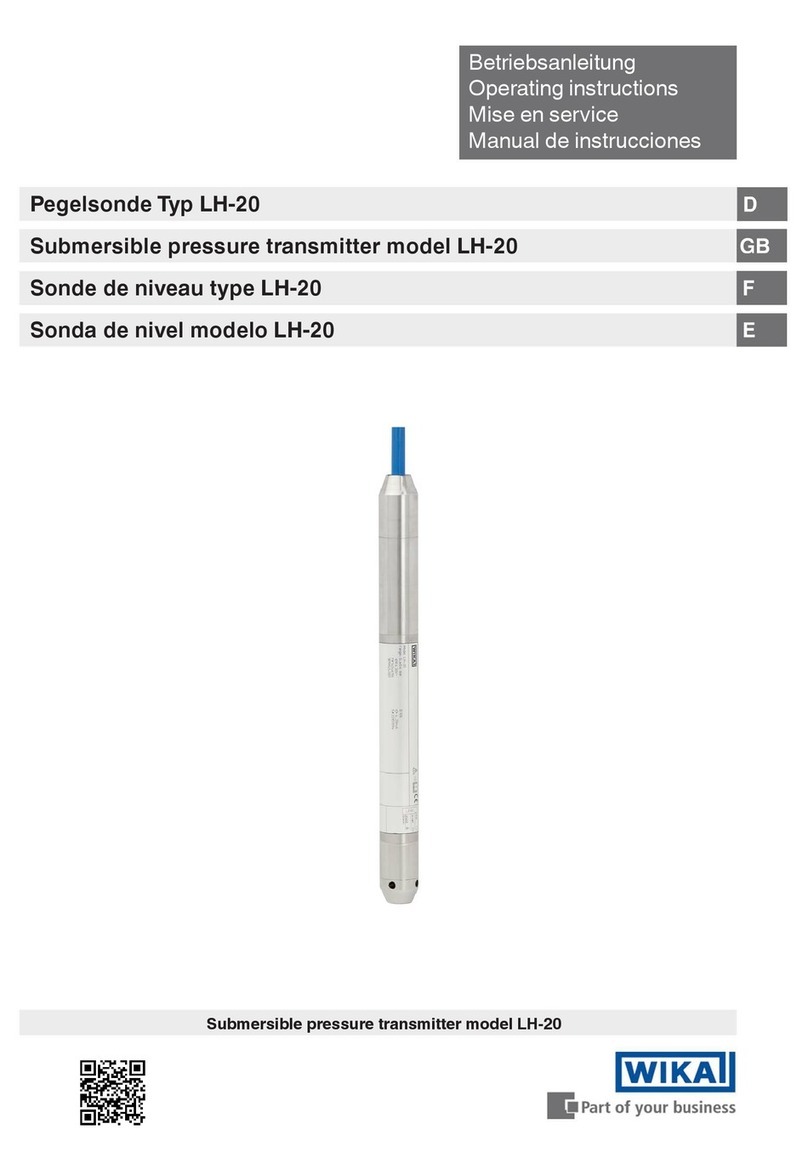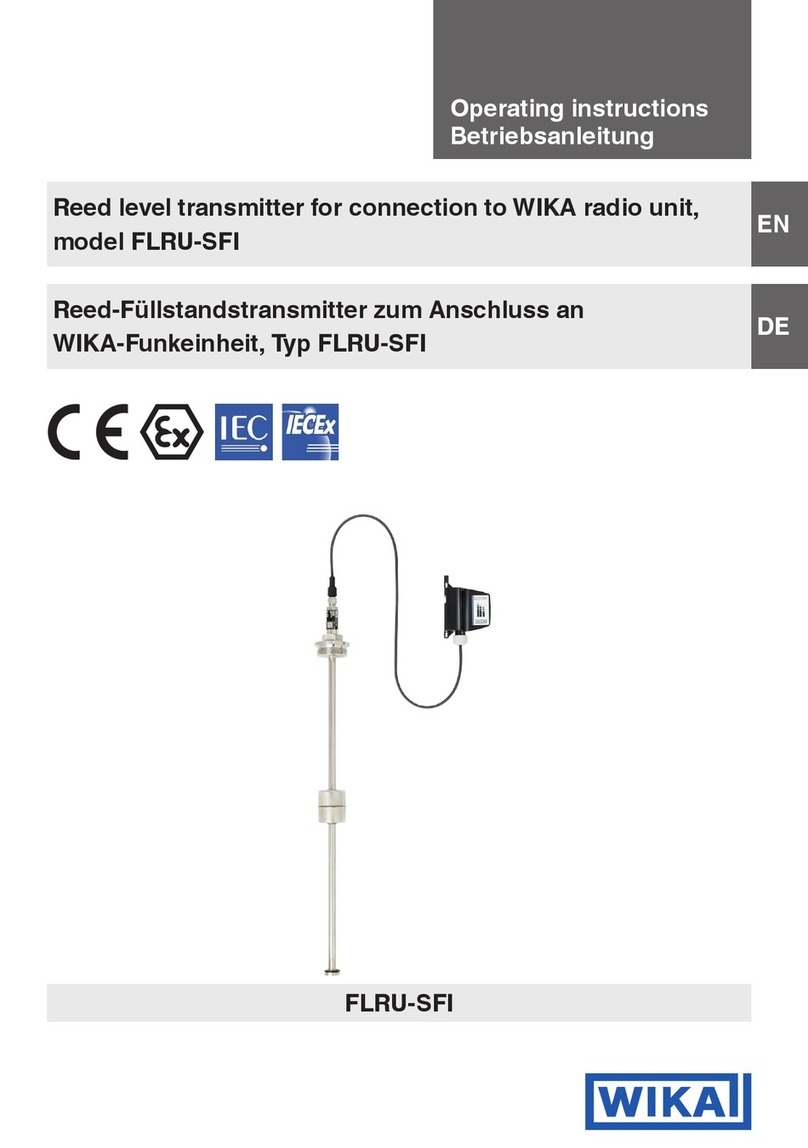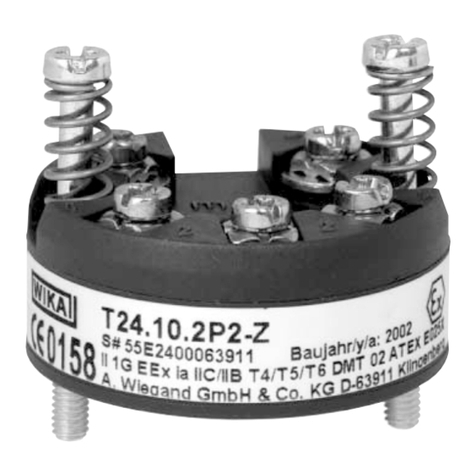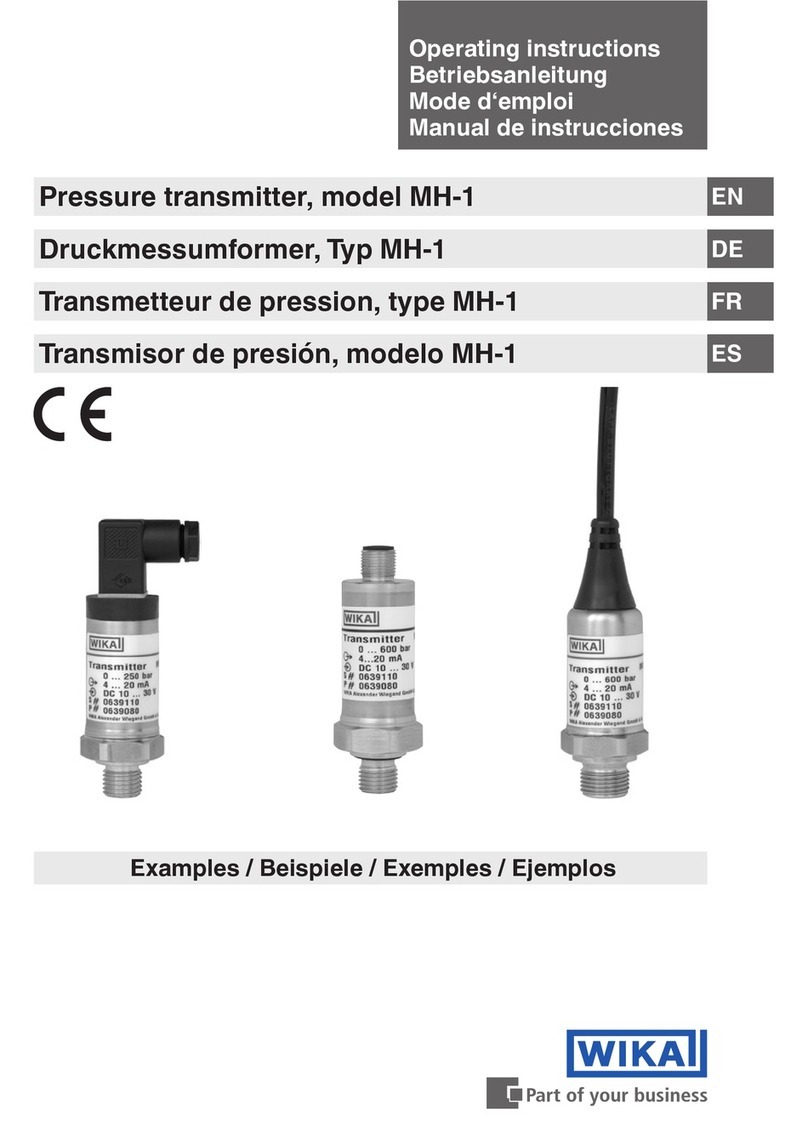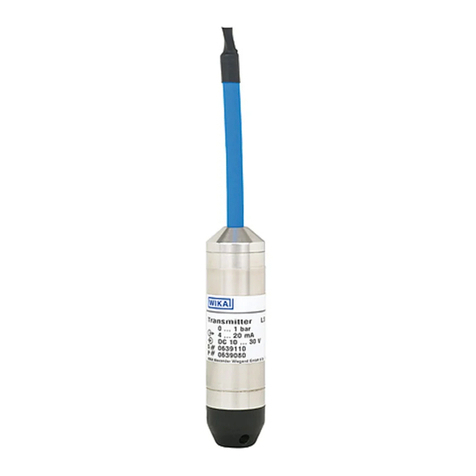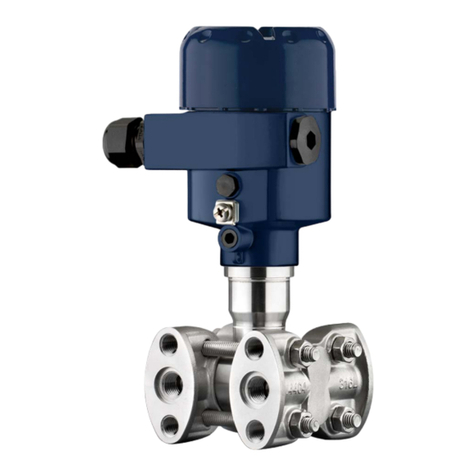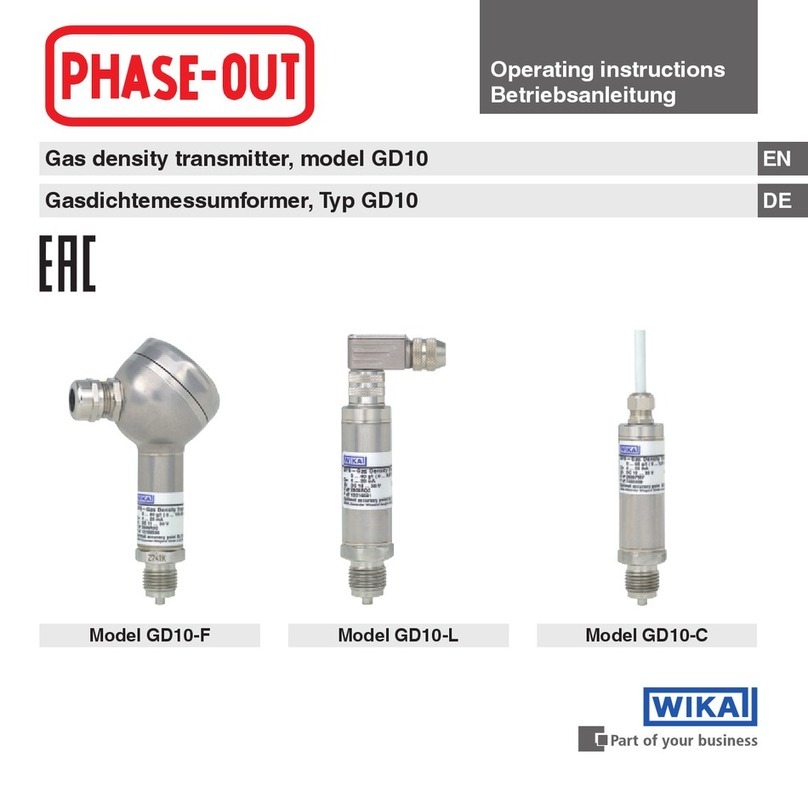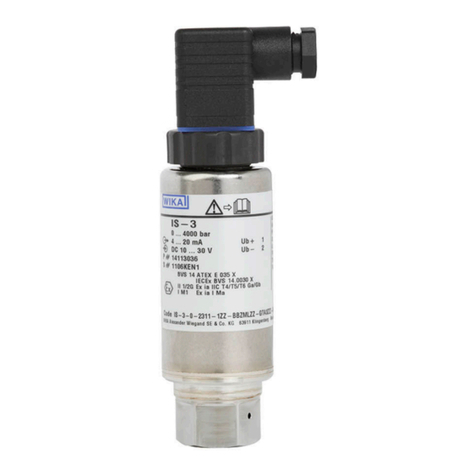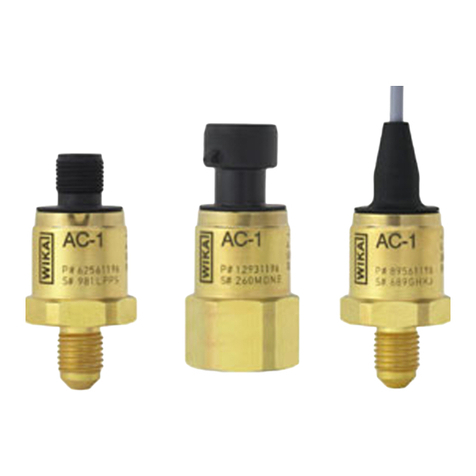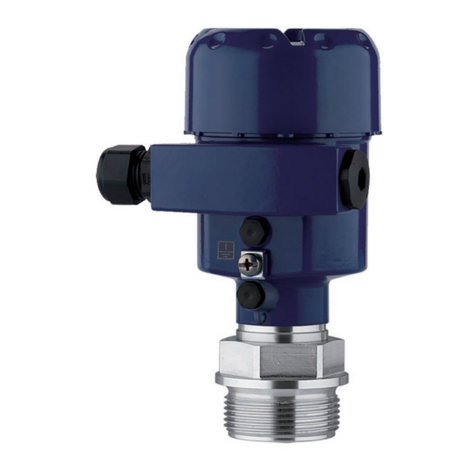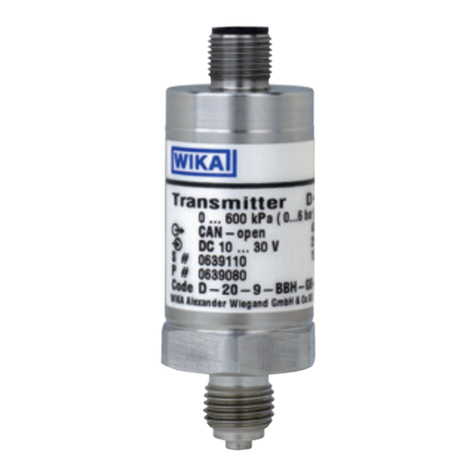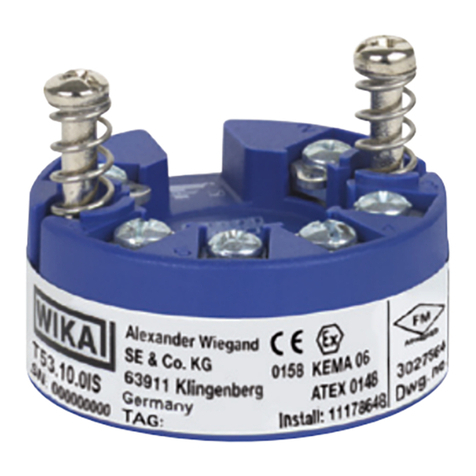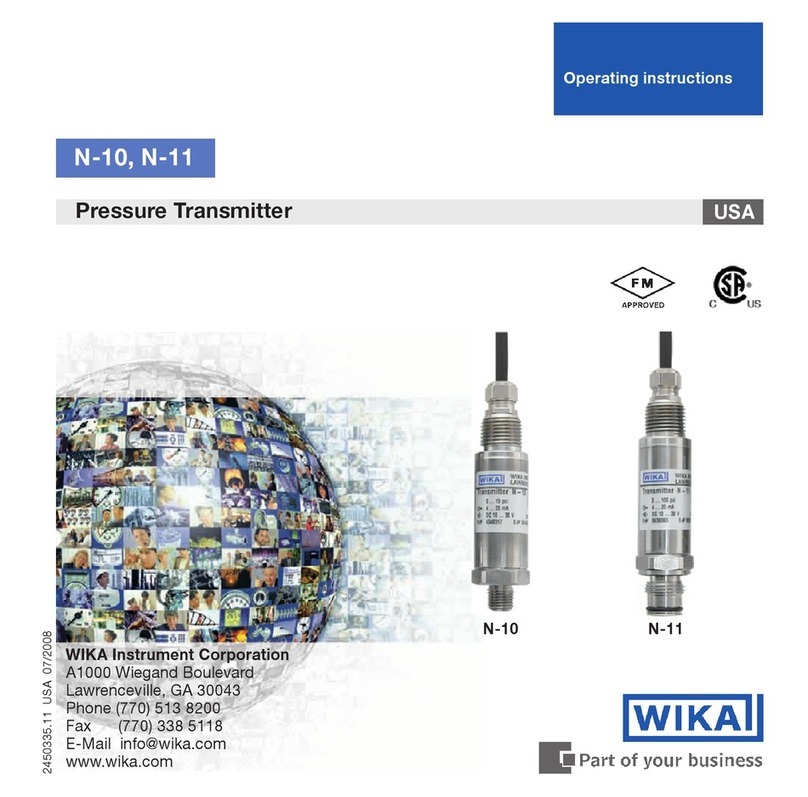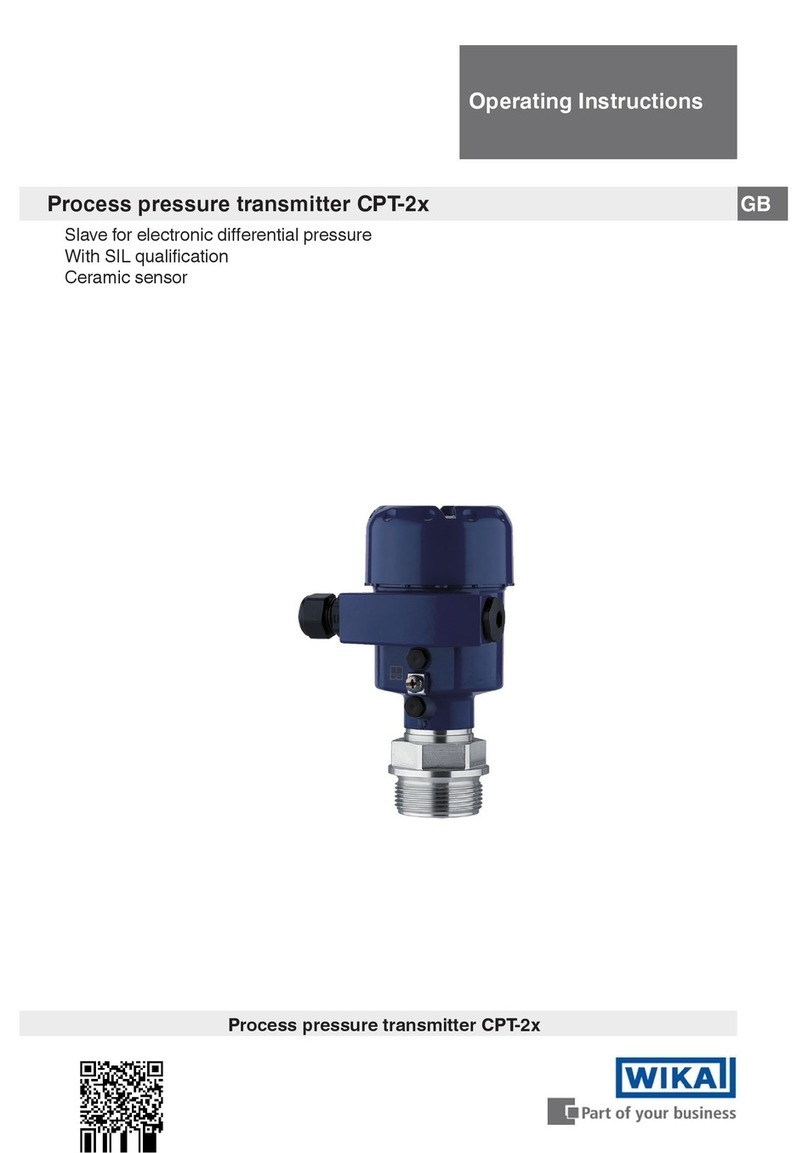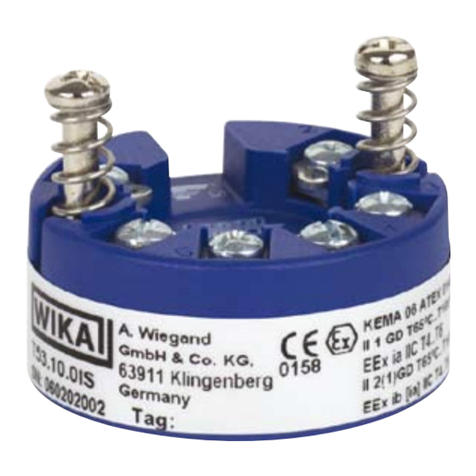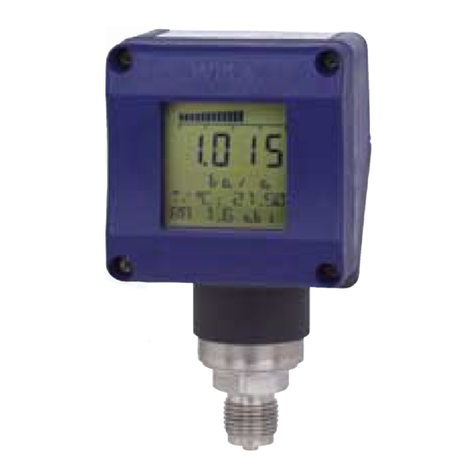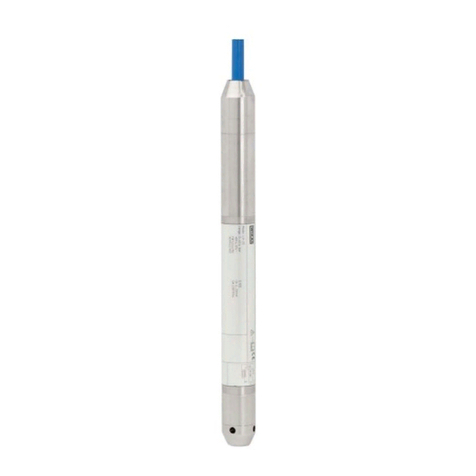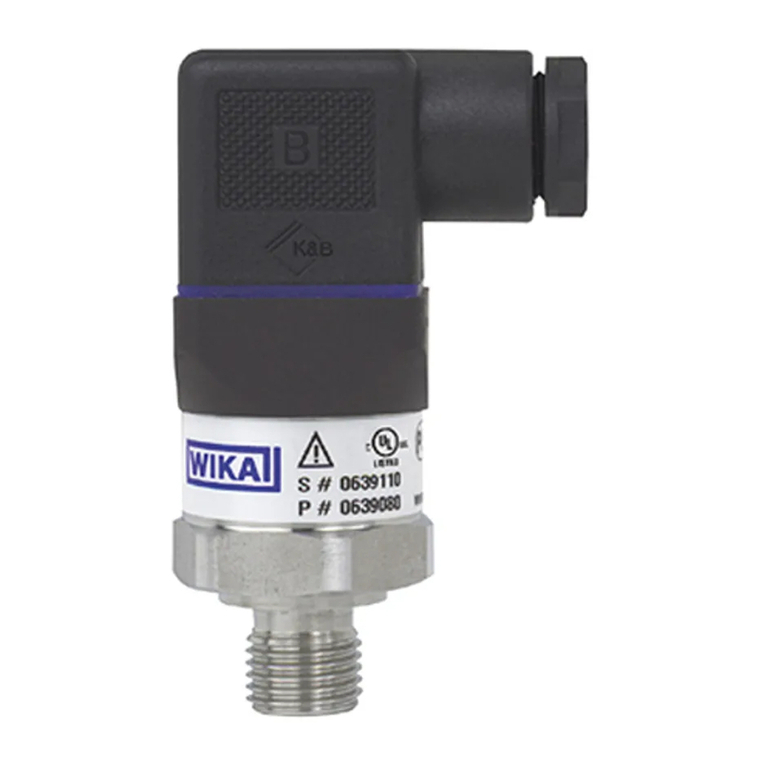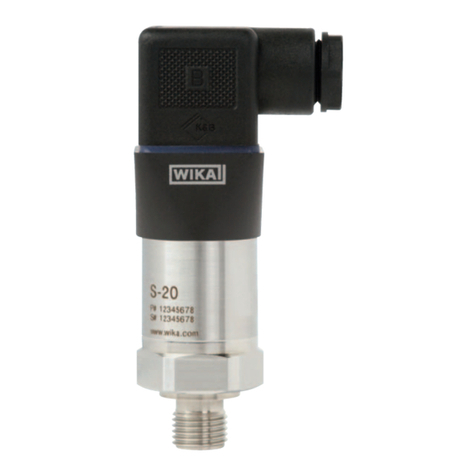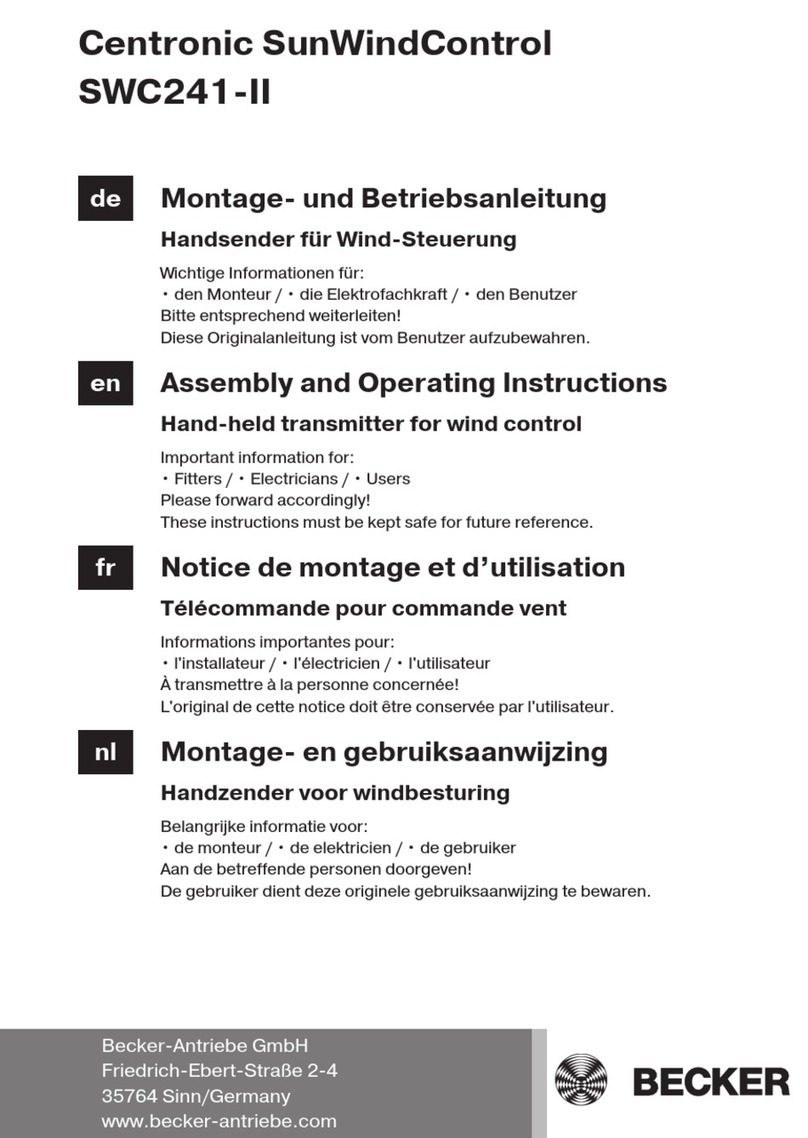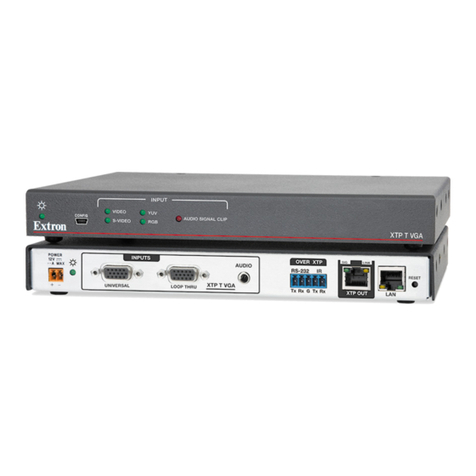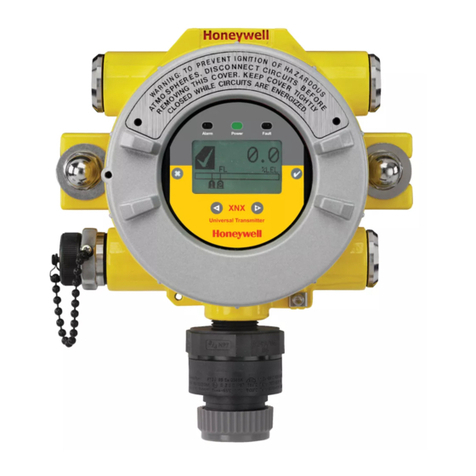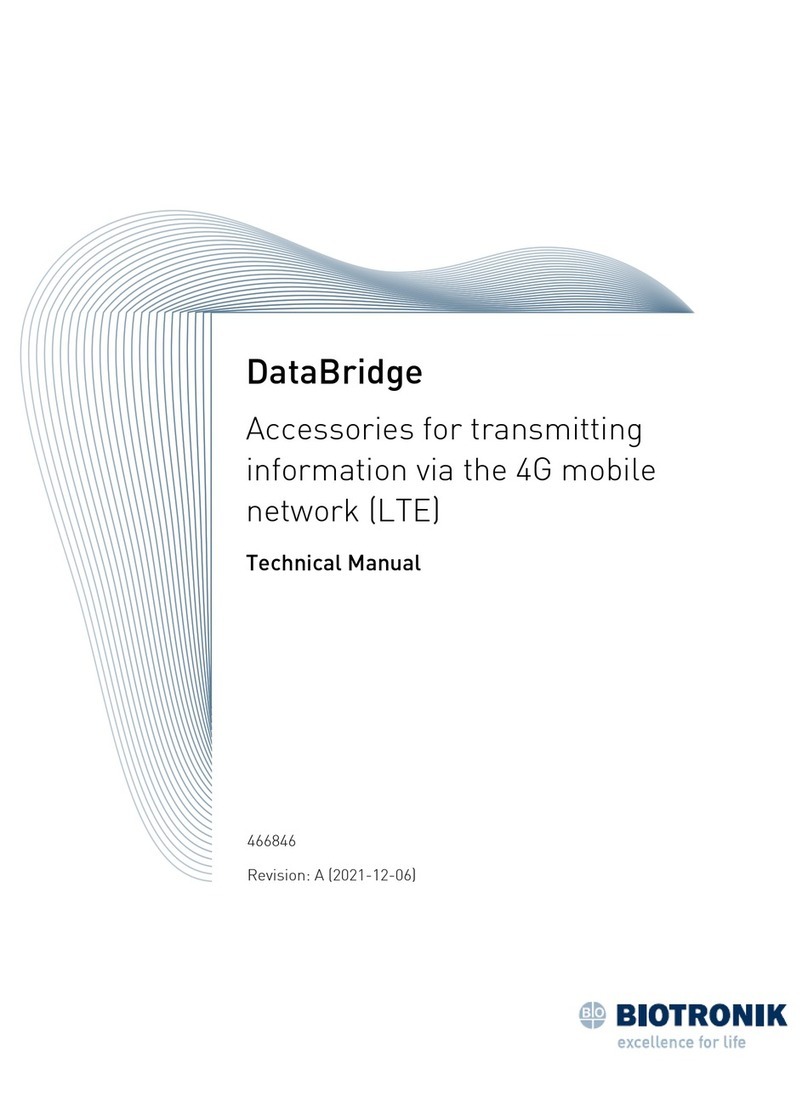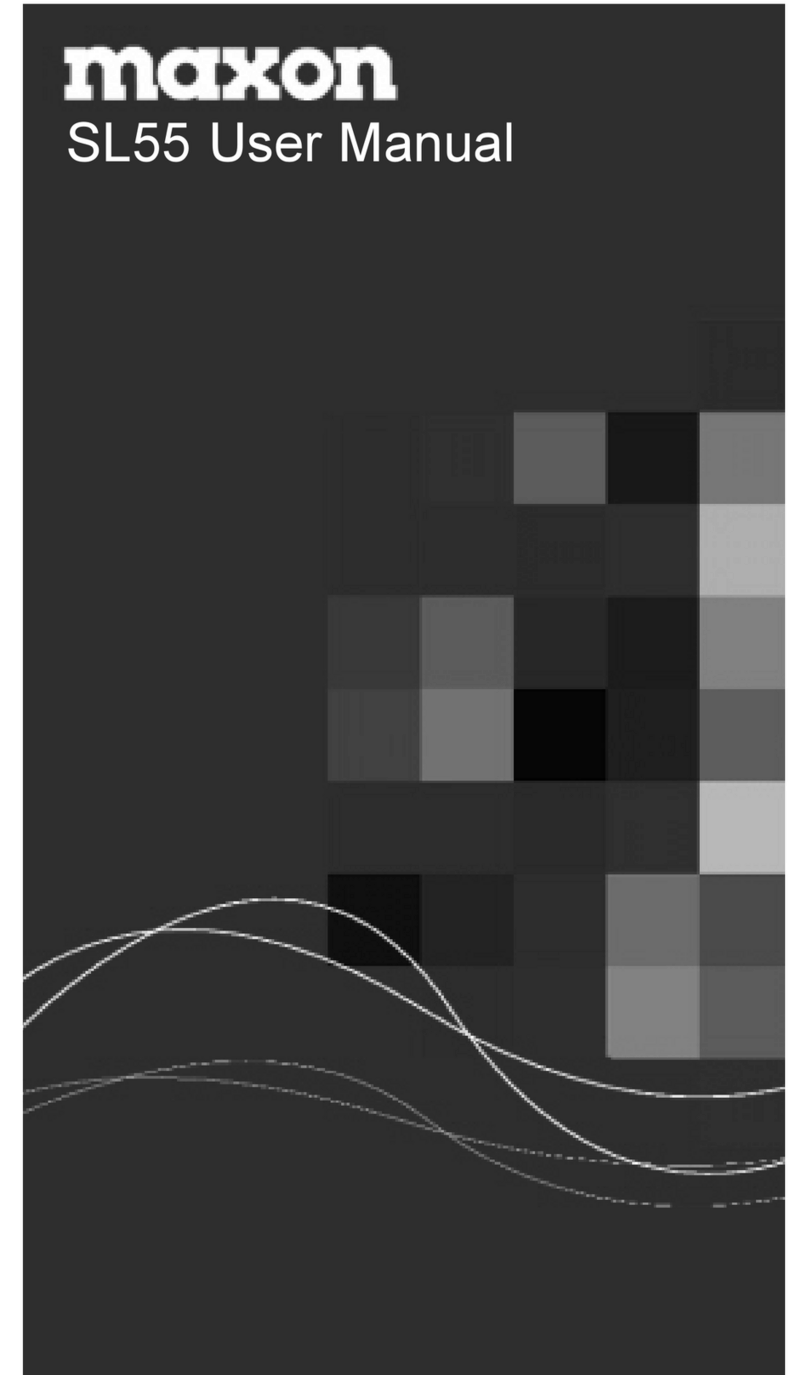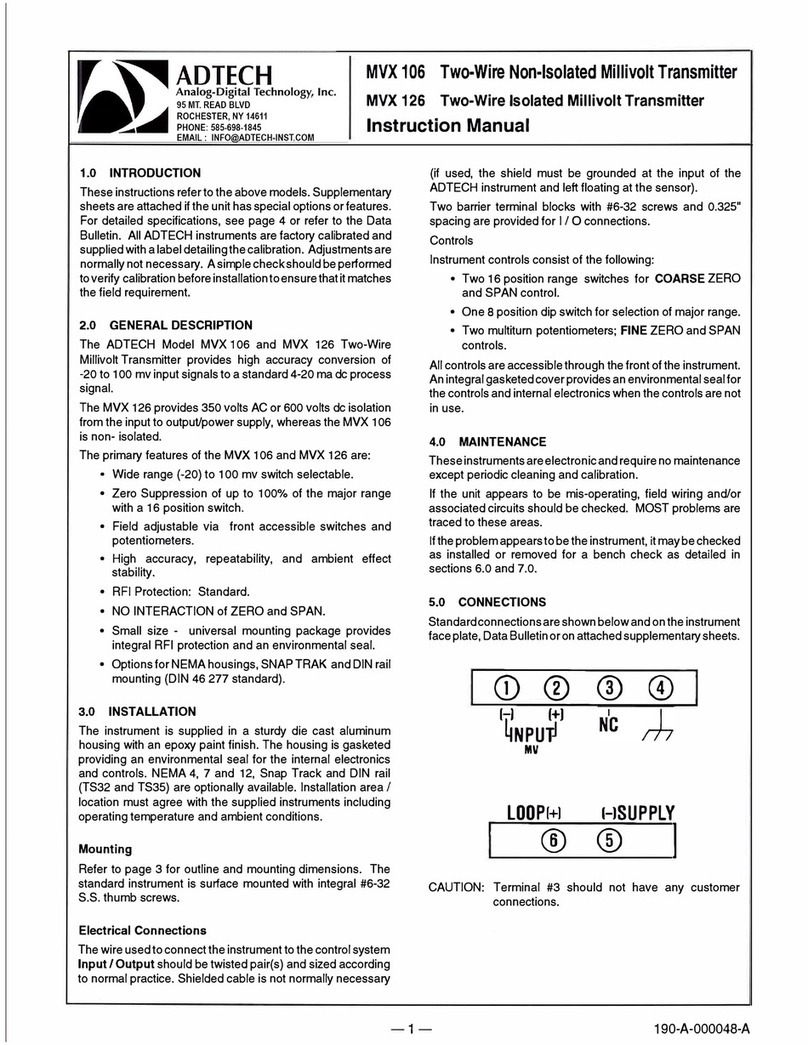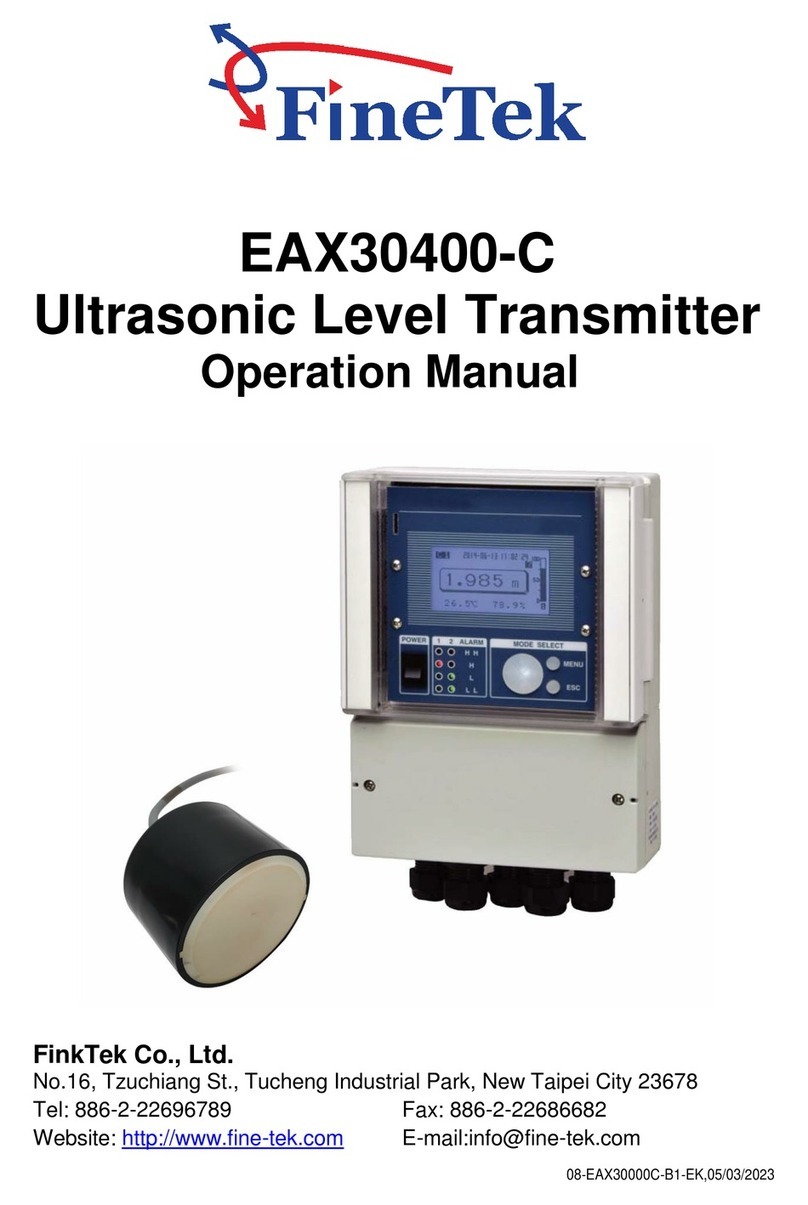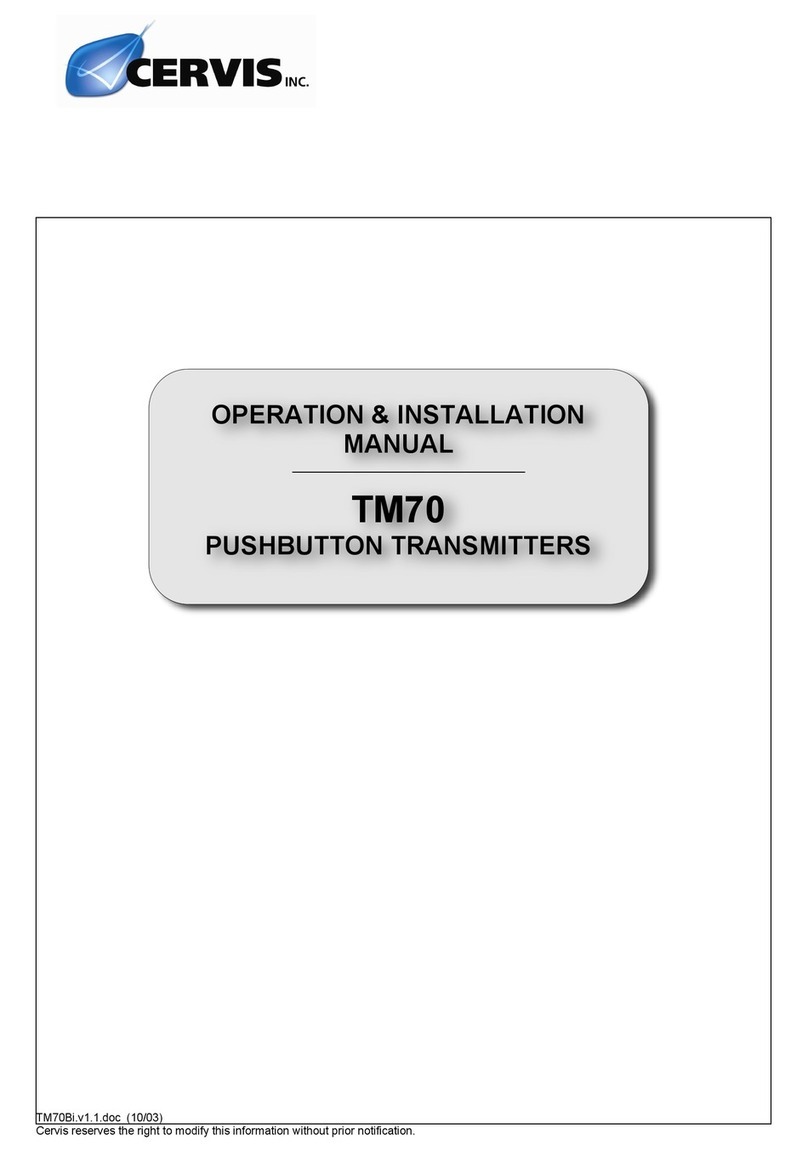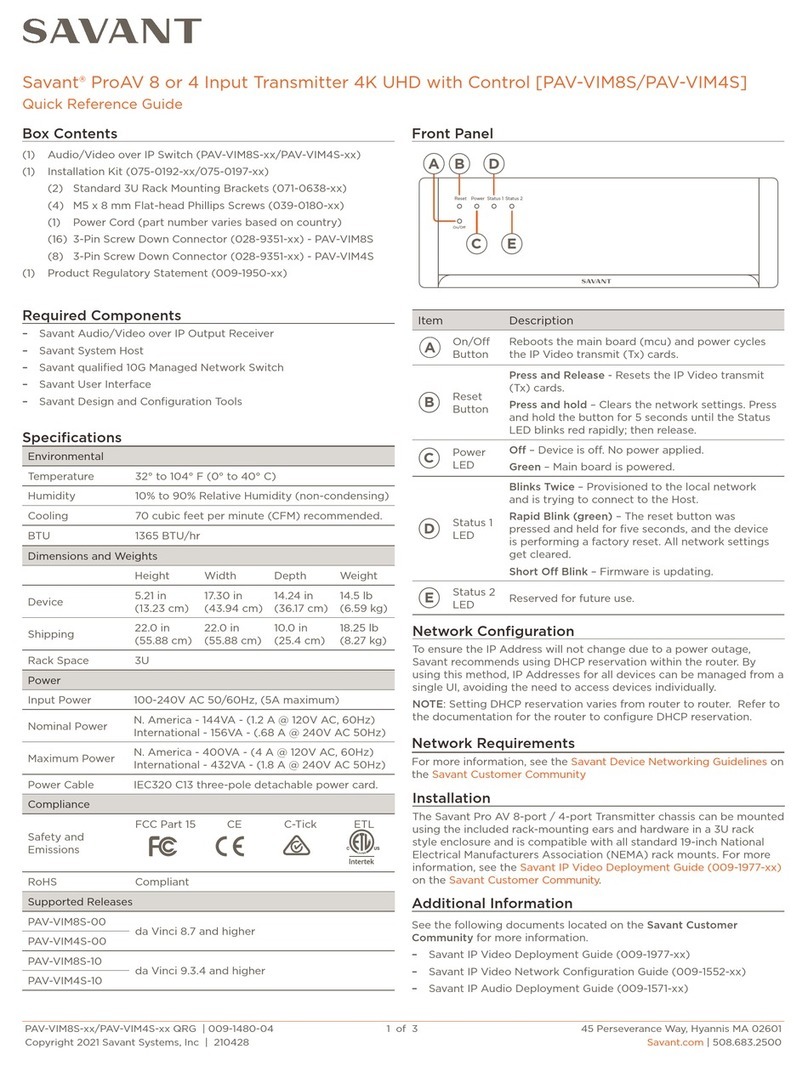WIKA SA-11 User manual

EN
DE
FR
ES
Operating instructions
Betriebsanleitung
Mode d'emploi
Manual de instrucciones
Druckmessumformer für die sterile Verfahrenstechnik Typ SA-11
Examples pressure transmitter model SA-11
Pressure transmitter for sanitary applications model SA-11
Transmisor de presión para procesos estériles modelo
SA-11
Transmetteur de pression pour applications stériles type SA-11
®

2WIKA operating instructions pressure transmitter, model SA-11
EN
DE
FR
ES
12142425.02 06/2021 EN/DE/FR/ES
© 04/2009 WIKA Alexander Wiegand SE & Co. KG
All rights reserved. / Alle Rechte vorbehalten.
WIKA®is a registered trademark in various countries.
WIKA®ist eine geschützte Marke in verschiedenen Ländern.
Prior to starting any work, read the operating instructions!
Keep for later use!
Vor Beginn aller Arbeiten Betriebsanleitung lesen!
Zum späteren Gebrauch aufbewahren!
Lire le mode d‘emploi avant de commencer toute opération !
A conserver pour une utilisation ultérieure !
¡Leer el manual de instrucciones antes de comenzar cualquier trabajo!
¡Guardar el manual para una eventual consulta posterior!
Operating instructions model SA-11 Page 3 - 24
Betriebsanleitung Typ SA-11 Seite 25 - 46
Mode d'emploi type SA-11 Page 47 - 68
Manual de instrucciones modelo SA-11 Página 69 - 91

3WIKA operating instructions pressure transmitter, model SA-11
EN
12142425.02 06/2021 EN/DE/FR/ES
1. General information 4
2. Safety 7
3. Specications 9
4. Design and function 14
14
5. Transport, packaging and storage 14
6. Commissioning, operation 15
7. Setting of zero point and span 19
8. Maintenance and cleaning 22
9. Faults 23
10. Dismounting, return and disposal 24
Contents
Contents
Declarations of conformity can be found online at www.wika.com.

4WIKA operating instructions pressure transmitter, model SA-11
EN
12142425.02 06/2021 EN/DE/FR/ES
1. General information
■
The pressure transmitter described in these operating instructions has been designed and manufactured using
state-of-the-art technology. All components are subject to stringent quality and environmental criteria during produc-
tion. Our management systems are certied to ISO 9001 and ISO 14001.
■
These operating instructions contain important information on handling the instrument.Working safely requires that
all safety instructions and work instructions are observed.
■
Observe the relevant local accident prevention regulations and general safety regulations for the instrument's range
of use.
■
The operating instructions are part of the product and must be kept in the immediate vicinity of the instrument and
readily accessible to skilled personnel at any time.
■
Skilled personnel must have carefully read and understood the operating instructions prior to beginning any work.
■
The manufacturer's liability is void in the case of any damage caused by using the product contrary to its intended
use, non-compliance with these operating instructions, assignment of insuciently qualied skilled personnel or
unauthorised modications to the instrument.
■
The general terms and conditions contained in the sales documentation shall apply.
■
Subject to technical modications.
■
Further information:
- Internet address: www.wika.de / www.wika.com
- Relevant data sheet: PE 81.80
- Application consultant: Tel.: +49 9372 132-0
Fax: +49 9372 132-406
1. General information

5WIKA operating instructions pressure transmitter, model SA-11
EN
12142425.02 06/2021 EN/DE/FR/ES
1. General information
Explanation of symbols
WARNING!
... indicates a potentially dangerous situation that can result in serious injury or death, if not avoided.
CAUTION!
... indicates a potentially dangerous situation that can result in light injuries or damage to property or the
environment, if not avoided.
Information
... points out useful tips, recommendations and information for ecient and trouble-free operation.
CAUTION!
... indicates a potentially dangerous situation that can result in burns, caused by hot surfaces or liquids, if
not avoided.
Abbreviations
2-wire The two connection leads are used for the voltage supply.
The measuring signal also provides the supply current.
3-wire Two connection leads are used for the voltage supply.
One connection lead is used for the measuring signal.
U+Positive power supply terminal
U-Reference potential
S+Analogue output

6WIKA operating instructions pressure transmitter, model SA-11
EN
12142425.02 06/2021 EN/DE/FR/ES
2. Safety
2. Safety
WARNING!
Before installation, commissioning and operation, ensure that the appropriate pressure transmitter has
been selected in terms of measuring range, design and specic measuring conditions.
Non-observance can result in serious injury and/or damage to property.
WARNING!
■
Open the connections only after the system has been depressurised.
■
Observe the operating parameters in accordance with chapter 3 “Specications”.
■
Always operate the pressure transmitter within the overpressure limit.
Further important safety instructions can be found in the individual chapters of these operating
instructions.
2.1 Intended use
The model SA-11 pressure transmitter is designed especially for the requirements of the food and beverage,
pharmaceutical and biotechnology industries.
The model SA-11 pressure transmitter is particularly suitable for the special conditions of CIP/SIP cleaning processes,
such as chemical stability towards cleaning liquids and high temperatures. The ush metal measuring cell is directly
welded to the process connection.This guarantees a crevice-free joint between the process connection and the
measuring cell, additional sealings are not required.
The instrument has been designed and built solely for the intended use described here, and may only be used accor-
dingly. The technical specications contained in these operating instructions must be observed. Improper handling or
operation of the pressure transmitter outside of its technical specications requires the instrument to be taken out of
service immediately and inspected by an authorised WIKA service engineer.
The manufacturer shall not be liable for claims of any type based on operation contrary to the intended use.
2.2 Compliance with 3-A conformity
For a 3-A-compliant connection the following sealings have to be used:
For milk thread ttings per DIN 11851, suitable prole sealings have to be used (e.g. SKS Komponenten BV or Kiesel-
mann GmbH).
For ttings per IDF sealings with support ring per ISO 2853 have to be used.
Note: Connections per SMS, APV RJT and NEUMO Connect S are not 3-A-compliant.

7WIKA operating instructions pressure transmitter, model SA-11
EN
12142425.02 06/2021 EN/DE/FR/ES
2. Safety
2.3 Compliance with EHEDG conformity
For an EHEDG-compliant connection, sealings in accordance with the current EHEDG policy document must be used.
Sealings for connections per ISO 2852, DIN 32676 and BS 4825 part 3 are, e.g., manufactured by Combit
International B.V.
A manufacturer of sealings for connections per DIN 11851 is, e.g., Kieselmann GmbH.
A manufacturer of VARINLINE®sealings is, e.g., GEA Tuchenhagen GmbH.
A manufacturer of NEUMO BioConnect®sealings is, e.g., NEUMO GmbH & Co. KG.
2.4 Personnel qualication
WARNING!
Risk of injury should qualication be insucient!
Improper handling can result in considerable injury and damage to property.
The activities described in these operating instructions may only be carried out by skilled personnel who
have the qualications described below.
Skilled personnel
Skilled personnel are understood to be personnel who, based on their technical training, knowledge of measurement
and control technology and on their experience and knowledge of country-specic regulations, current standards and
directives, are capable of carrying out the work described and independently recognising potential hazards.
Special operating conditions require further appropriate knowledge, e.g. of aggressive media.
2.5 Special hazards
WARNING!
For hazardous media such as oxygen, acetylene, ammable or toxic gases or liquids, and refrigeration
plants, compressors, etc., in addition to all standard regulations, the appropriate existing codes or
regulations must also be followed.

8WIKA operating instructions pressure transmitter, model SA-11
EN
12142425.02 06/2021 EN/DE/FR/ES
WARNING!
Residual media at the dismounted pressure transmitter can result in a risk to persons, the environment
and equipment.
Take sucient precautionary measures.
Do not use this instrument in safety or emergency stop devices. Incorrect use of the instrument can result
in injury.
Should a failure occur, aggressive media with extremely high temperature and under high pressure or
vacuum may be present at the instrument.
2.6 Labelling / Safety marks
Product label
If the serial number and the 2D code become illegible due to mechanical damage or overpainting, traceability will no
longer be possible.
Output signal
Pin assignment
Supply voltage
Serial number
Measuring range
2D code
Approvals
Article number
2. Safety

9WIKA operating instructions pressure transmitter, model SA-11
EN
12142425.02 06/2021 EN/DE/FR/ES
3. Specications
3. Specifications
Accuracy specications
Non-linearity per BFSL (per IEC 61298-2) ≤ 0.2 % of span
Accuracy 1)
■
≤ 0.5 % of span
■
≤ 0.25 % of span
Mean temperature coecients at 0 ... 80 °C [32 ... 176 °F]
Zero point Measuring range 0 ... 0.6 bar to 0 ... 25 bar ≤ 0.2 % of span / 10 K
Measuring range 0 ... 0.4 bar ≤0.25 % of span / 10 K
Measuring range 0 ... 0.25 bar ≤0.,4 % of span / 10 K
Span ≤ 0.2 % of span / 10 K
Long-term stability (per DIN 16086) ≤ 0.2 % of span/year
Adjustability of zero point, span Adjustment is made using potentiometers inside the instrument.
Not possible for IP68 cable outlet.
Non-repeatability (per IEC 61298-2) ≤ 0.1 % of span
Mounting position inuence Calibrated in vertical mounting position with process connection facing downwards.
1) Including non-linearity, hysteresis, zero oset and end value deviation (corresponds to measured error per IEC 61298-2), calibrated in vertical mounting position
with process connection facing downwards.
Measuring ranges, gauge pressure
Measuring range
bar psi
0 ... 0.25 0 ... 5
0 ... 0.4 0 ... 10
0 ... 0.6 0 ... 15
0 ... 1 0 ... 30
0 ... 1.6 0 ... 60
0 ... 2.5 0 ... 100
0 ... 4 0 ... 160
0 ... 6 0 ... 200
0 ... 10 0 ... 300
0 ... 16
0 ... 25
Measuring ranges, absolute pressure
Measuring range
bar abs. psi abs.
0 ... 1 0 ... 15
0 ... 1.6 0 ... 25
0 ... 2.5 0 ... 50
0 ... 4 0 ... 100
0 ... 6 0 ... 250
0 ... 10
0 ... 16

10 WIKA operating instructions pressure transmitter, model SA-11
EN
12142425.02 06/2021 EN/DE/FR/ES
3. Specications
Vacuum and +/- measuring ranges
Measuring range
bar psi
-1 ... 0 -30 inHg ... 0
-1 ... +0.6 -30 inHg ... +30
-1 ... +1
-1 ... +2
-1 ... +3
-1 ... +4
-1 ... +5
-1 ... +9
-1 ... +10
-1 ... +15
Further details on: Measuring ranges
Special measuring ranges See product label
Unit
■
bar
■
psi
■
bar abs.
■
psi abs.
Overpressure limit
Measuring ranges ≤ 6 bar 4 times
Measuring ranges 10 bar and 16 bar 3 times
Measuring range 25 bar 2 times
Vacuum resistance Vacuum-resistant to -1 bar

11WIKA operating instructions pressure transmitter, model SA-11
EN
12142425.02 06/2021 EN/DE/FR/ES
3. Specications
Process connection
Standard Size
TRI-CLAMP®(DIN 32676)
For pipes per DIN 11866 row C or ASME BPE
■
DN 1 ½"
■
DN 2"
DIN 32676
For pipes per DIN 11866 row A or DIN 11850 row 2
■
DN 32
■
DN 40
■
DN 50
ISO 2852
For pipes per ISO 2037 and BS 4825 part 1
■
DN 38
■
DN 40
■
DN 51
DIN 11851
For pipes per DIN 11850 row 2
■
DN 25
■
DN 40
■
DN 50
SMS (SMS 1145)
For pipes per ISO 1127 row 2 or ISO 2037/1992
■
DN 1 ½"
■
DN 2"
IDF (ISO/DIS 2853 and BS 4825 part 4)
For pipes per ISO 1127 row 2 or ISO 2037/1992
■
DN 1 ½"
■
DN 2"
APV-RJT (BS 4825 part 5)
For pipes per BS 4825 part 1 and O.D. tube
■
DN 1 ½"
■
DN 2"
VARINLINE®
Suitable for installation in VARINLINE®components
■
Form F, PN 25
■
Form N, PN 25
DIN 11864-1 form A
For pipes per DIN 11866 row A or DIN 11850 row 2
■
DN 40
■
DN 50
DIN 11864-2 form A
For pipes per DIN 11866 row A or DIN 11850 row 2
■
DN 40
■
DN 50
DIN 11864-3 form A
For pipes per DIN 11866 row A or DIN 11850 row 2
■
DN 40
■
DN 50
NEUMO BioControl®
Suitable for installation in BioControl®cases, see data sheet
AC 09.14
■
Size 50
■
Size 65
NEUMO BioConnect®
Flange, form V
■
DN 40
■
DN 50
NEUMO BioConnect®
Liner and grooved union nut, form V
■
DN 40
■
DN 50
DRD ange connection -
For dimensions, see data sheet PE 81.80.

12 WIKA operating instructions pressure transmitter, model SA-11
EN
12142425.02 06/2021 EN/DE/FR/ES
3. Specications
Output signal
Signal type
■
4 ... 20 mA, 2-wire
■
0 ... 20 mA, 3-wire
■
DC 0 ... 10 V, 3-wire
■
DC 0 ... 5 V, 3-wire
Other output signals, e.g. CANopen, see product label
Load in Ω
4 ... 20 mA, 2-wire RA ≤ (U+ - 10 V) / 0.02 A
0 ... 20 mA, 3-wire RA ≤ (U+- 3 V) / 0.02 A
DC 0 ... 10 V, 3-wire RA > 10 k
DC 0 ... 5 V, 3-wire RA > 10 k
Voltage supply
Supply voltage Signal type 4 ... 20 mA, 2-wire DC 10 ... 30 V
Signal type 0 ... 20 mA, 3-wire DC 10 ... 30 V
Signal type DC 0 ... 10 V, 3-wire DC 14 ... 30 V
Signal type DC 0 ... 5 V, 3-wire DC 10 ... 30 V
Overvoltage protection / dielectric strength 1) DC 36 V
Time response
Response time (10 ... 90 %) ≤ 10 ms
1) NEC class 02 voltage supply (low voltage and low current max. 100 VA even under fault conditions)
Electrical connection Ingress
protection 1)
Wire
cross-section
Cable diameter Cable length
Angular connector DIN 175301-803 A IP65 Max. 1.5 mm26 ... 8 mm -
Field case IP67 -- -
Circular connector M12 x 1 (4-pin) IP67 - - -
Cable outlet, 1.5 m IP68 Max. 0.5 mm26 ... 8 mm 1.5 m
1) The stated ingress protection only applies when plugged in using mating connectors that have the appropriate ingress protection.
Other electrical connections on request

13WIKA operating instructions pressure transmitter, model SA-11
EN
12142425.02 06/2021 EN/DE/FR/ES
3. Specications
Further details on: Electrical connection
Short-circuit resistance S+ vs. U-
Reverse polarity protection U+ vs. U-
Insulation voltage DC 500 V with NEC class 02 voltage supply (low voltage and low current max. 100 VA even under
fault conditions)
Materials
Material (wetted) Stainless steel 1.4435
Material (in contact with the environment) Stainless steel 1.4571
System ll uid
■
Synthetic oil, KN 77, FDA-compliant, FDA-CFR no. 21CFR178.3750
■
Neobee® M-20, KN 59, FDA-compliant, FDA-CFR no. 21CFR174.5
Operating conditions
Temperature ranges 1)
Medium temperature -20 ... +150 °C [-4 ... +302 °F]
Ambient temperature -20 ... +80 °C [-4 ... +176 °F]
Storage temperature -40 ... +100 °C [-40 ... +212 °F]
Vibration resistance (per IEC 60068-2-6) 15 g
Shock resistance (per IEC 60068-2-27) 500 g
1) Also meets EN 50178, tab. 7, operation (C) 4K4H, storage (D) 1K4, transport (E) 2K3
For special model numbers, e.g. SA-11000, please note the specications stated on the delivery note.
For further specications see WIKA data sheet PE 81.80 and the order documentation.

14 WIKA operating instructions pressure transmitter, model SA-11
EN
12142425.02 06/2021 EN/DE/FR/ES
4. Design and function / 5. Transport, packaging and storage
4. Design and function
4.1 Description
The prevailing pressure is measured at the sensor element through the deformation of a diaphragm. By supplying
power, this deformation of the diaphragm is converted into an electrical signal.The output signal from the pressure
transmitter is amplied and standardised. The output signal is proportional to the measured pressure.
4.2 Scope of delivery
Cross-check scope of delivery with delivery note.
5. Transport, packaging and storage
5.1 Transport
Check the pressure transmitter for any damage that may have been caused during transportation.
Obvious damage must be reported immediately.
5.2 Packaging
Do not remove packaging until just before mounting.
Keep the packaging as it will provide optimum protection during transport (e.g. change in installation site, sending for
repair).
5.3 Storage
Permissible conditions at the place of storage:
■
Storage temperature: See chapter 3 “Specications”
■
Humidity: 45 ... 75 % relative humidity
Avoid exposure to the following factors:
■
Mechanical vibration, mechanical shock (putting it down hard)
■
Soot, vapour, dust and corrosive gases
■
Hazardous environments, ammable atmospheres
Store the pressure transmitter in its original packaging in a location that fulls the conditions listed above. If the original
packaging is not available, pack and store the instrument as described below:
1. Place the protective cap on the process connection
2. Place the instrument, along with the shock-absorbent material, in the packaging.

15WIKA operating instructions pressure transmitter, model SA-11
EN
12142425.02 06/2021 EN/DE/FR/ES
WARNING!
Before storing the instrument (following operation), remove any residual media. This is of particular
importance if the medium is hazardous to health, e.g. caustic, toxic, carcinogenic, radioactive, etc.
6. Commissioning, operation
CAUTION!
Prior to commissioning, the pressure transmitter must be subjected to a visual inspection.
■
Leaking uid is indicative of damage.
■
Check the diaphragm of the process connection for any damage.
■
Only use the pressure transmitter if it is in perfect condition with respect to safety.
6.1 Mechanical mounting
■
Remove the protective cap not until shortly before installation.
■
Ensure that the diaphragm of the process connection is not damaged during installation.
■
The sealing faces at the instrument and the measuring point always have to be clean.
■
Carry out the required mounting steps properly, depending on the process connection.
■
Carry out the mounting steps described in chapter 6.2 “Electrical mounting” properly.
Mounting instructions for instruments with EHEDG and 3-A
Observe the following instructions, especially for EHEDG-certied and 3-A-compliant instruments.
■
To maintain the EHEDG certication, one of the EHEDG-recommended process connections must be used. These
are marked with the logo in the data sheet.
■
To maintain the conformity to the 3-A standard, a 3-A-compliant process connection must be used.These are
marked with the logo in the data sheet.
■
Mount the instrument with minimal dead space and able to be cleaned easily.
■
The mounting position of the instrument, welding socket and instrumentation T-piece should be designed to be
self-draining.
■
The mounting position must not form a draining point or cause a basin to be formed.
■
With the process connection via an instrumentation T-piece, the branch L of the T-piece must not be longer than the
diameter D of the T-piece (L ≤ D).
5. Transport, packaging and storage / 6. Commissioning, operation

16 WIKA operating instructions pressure transmitter, model SA-11
EN
12142425.02 06/2021 EN/DE/FR/ES
6. Commissioning, operation
6.2 Electrical mounting
■
The instrument must be grounded via the process connection.
■
For instruments with voltage output, use shielded cable, and ground the shield on at least one end of the lead, if the
lines are longer than 30 m or leave the building.
■
In North America, use the instrument in line with “class 2 circuits” or “class 2 power units” in accordance with CEC
(Canadian Electrical Code) or NEC (National Electrical Code).
■
Select a cable diameter that matches the cable bushing of the connector. Make sure that the cable gland of the
mounted plug has a tight t and that the seals are present and undamaged. Tighten the threaded connection and
check that the seal is correctly seated, in order to ensure the ingress protection.
■
For cable outlets, make sure that no moisture enters at the cable end.
Pin assignment
Angular connector DIN 175301-803 A
2-wire 3-wire
U+ 1 1
U- 2 2
S+ - 3
Circular connector M12 x 1 (4-pin)
2-wire 3-wire
U+ 1 1
U- 3 3
S+ - 4
Field case
2-wire 3-wire
U+ 1 1
U- 2 2
S+ 3 3
Cable outlet
2-wire 3-wire
U+ Brown (BN) Brown (BN)
U- Green (GN) Green (GN)
S+ -White (WH)

17WIKA operating instructions pressure transmitter, model SA-11
EN
12142425.02 06/2021 EN/DE/FR/ES
6. Commissioning, operation
Fitting a DIN 175301-803 A angular connector
1. Loosen the screw (1).
2. Loosen the cable gland (2).
3. Pull the angle housing (5), with the terminal block (6) inside, away from the
instrument.
4. Via the mounting hole (D), lever the terminal block (6) out of the angle housing (5).
Do not try to push the terminal block (6) out using the screw hole (1) or the cable
gland (2), otherwise the sealing of the angle housing could be damaged.
5. Select a conductor with an outer diameter matched to the angle housing's cable
bushing. Slide the cable through the cable gland (2), washer (3), gland seal (4)
and angle housing (5).
6. Connect the cable ends to the appropriate connection terminals on the terminal
block (6) (see table “Electrical connection”).
7. Press the angle housing (5) onto the terminal block (6).
8. Tighten the cable gland (2) around the cable. Make sure that the seals are not
damaged and that the cable gland and seals are correctly seated in order to
ensure ingress protection.
9. Place the at, square gasket over the pressure transmitter's connection pins.
10. Slide the terminal block (6) onto the pressure transmitter's connection pins.
11. Secure the angle housing (5) and terminal block (6) to the pressure transmitter
with the screw (1).
(6)
(5)
(1)
(2) (3) (4)
(D) Mounting hole

18 WIKA operating instructions pressure transmitter, model SA-11
EN
12142425.02 06/2021 EN/DE/FR/ES
Mounting of eld case
1. Unscrew the case cover and open the cable gland using a suitable open-ended spanner.
2. Slide the cable though the cable gland into the open case head.
3. Press down the corresponding plastic lever on the spring clip terminal, using a screwdriver, in order to open the
terminal contact.
Insert the prepared cable end into the opening and let the plastic lever go.The cable end is now clamped in the
spring clip terminal.
4. After connecting the individual wires, tighten the cable gland and screw down the case cover.
Case cover Cable gland
Spring clip terminal
6. Commissioning, operation

19WIKA operating instructions pressure transmitter, model SA-11
EN
12142425.02 06/2021 EN/DE/FR/ES
7. Setting of zero point and span
The span-setting potentiometer is used for factory adjustment and should only be readjusted if calibrati-
on equipment is available which has at least three times the accuracy of the pressure transmitter.
7.1 Access to potentiometer
To gain access to the potentiometers, open the instrument as follows:
Clamping nut (gure A)
1. Disconnect the electrical connection (1) from the instrument.
2. Remove the clamping nut (2).
3. Carefully pull the instrument connector (3) from the instrument.
Opening the case (gure A)
Unscrew the screw on the top of the case or the case cover of the eld case.
A
Clamping nut Field case
7. Setting of zero point and span

20 WIKA operating instructions pressure transmitter, model SA-11
EN
12142425.02 06/2021 EN/DE/FR/ES
7.2 Adjusting the zero point (gure B)
1. Connect the instrument connector (3) to the supply voltage and a display unit (e.g. ammeter, voltmeter) according to
the pin assignment.
2. Go to the start of the measuring range.
3.
Using potentiometer “Z”, adjust the minimum output signal (e.g. 4 mA)
7.3 Adjusting the span (gure B)
1. Connect the instrument connector (3) to the supply voltage and a display unit (e.g. ammeter, voltmeter) according to
the pin assignment.
2. Drive pressure to the end of the measuring range.
3.
Using potentiometer “S”, adjust the maximum output signal (e.g. 20 mA)
4. Check the zero point and if there is any deviation, re-adjust it.
5. Repeat the procedure until the zero point and the span are set correctly.
B
Field caseClamping nut
S = span
Z = zero point
7. Setting of zero point and span
Other manuals for SA-11
1
Table of contents
Languages:
Other WIKA Transmitter manuals
Popular Transmitter manuals by other brands
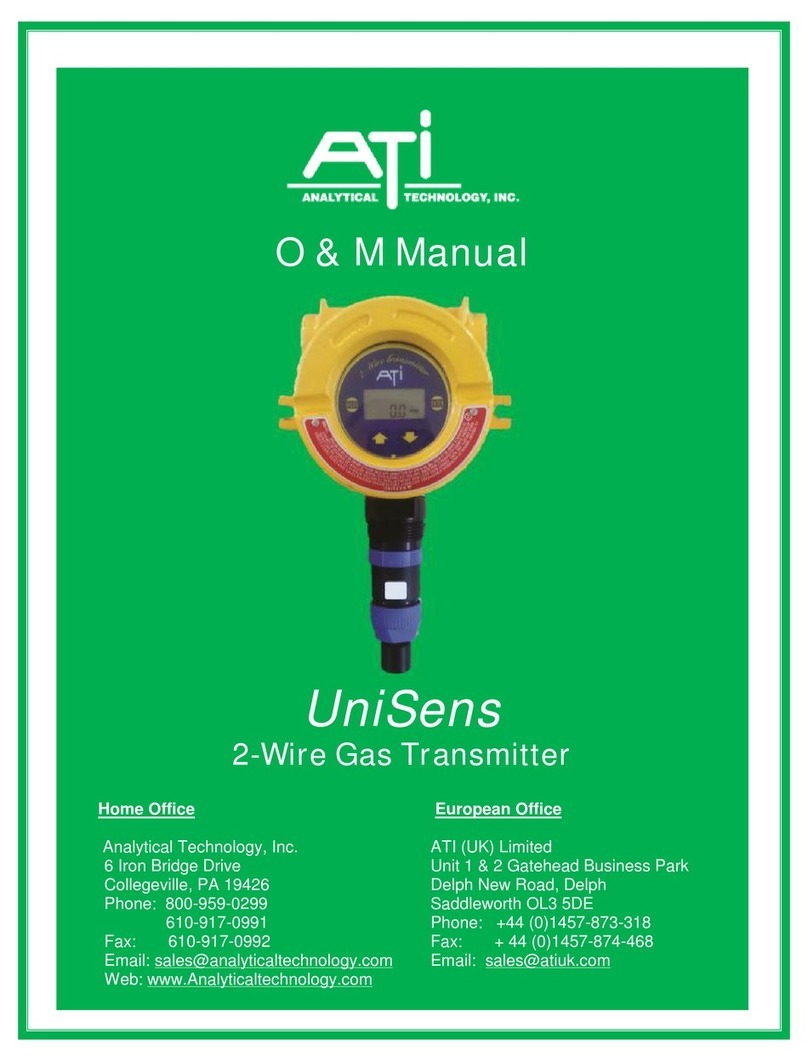
ATI Technologies
ATI Technologies UniSens A12 Series manual
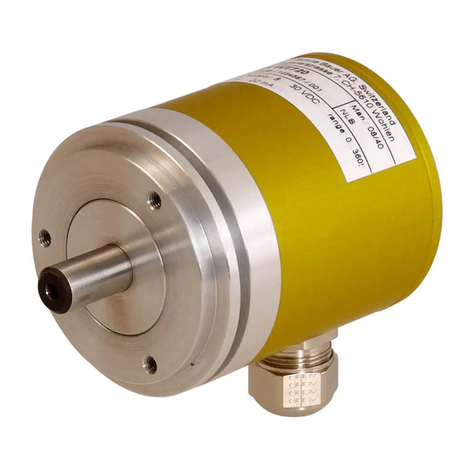
Camille Bauer
Camille Bauer KINAX WT720 operating instructions

SONBEST
SONBEST SM1635B-1 user manual

EUTECH INSTRUMENTS
EUTECH INSTRUMENTS ALPHA PH 1000 PHORP CONTROLLERTRANSMITTER instruction manual
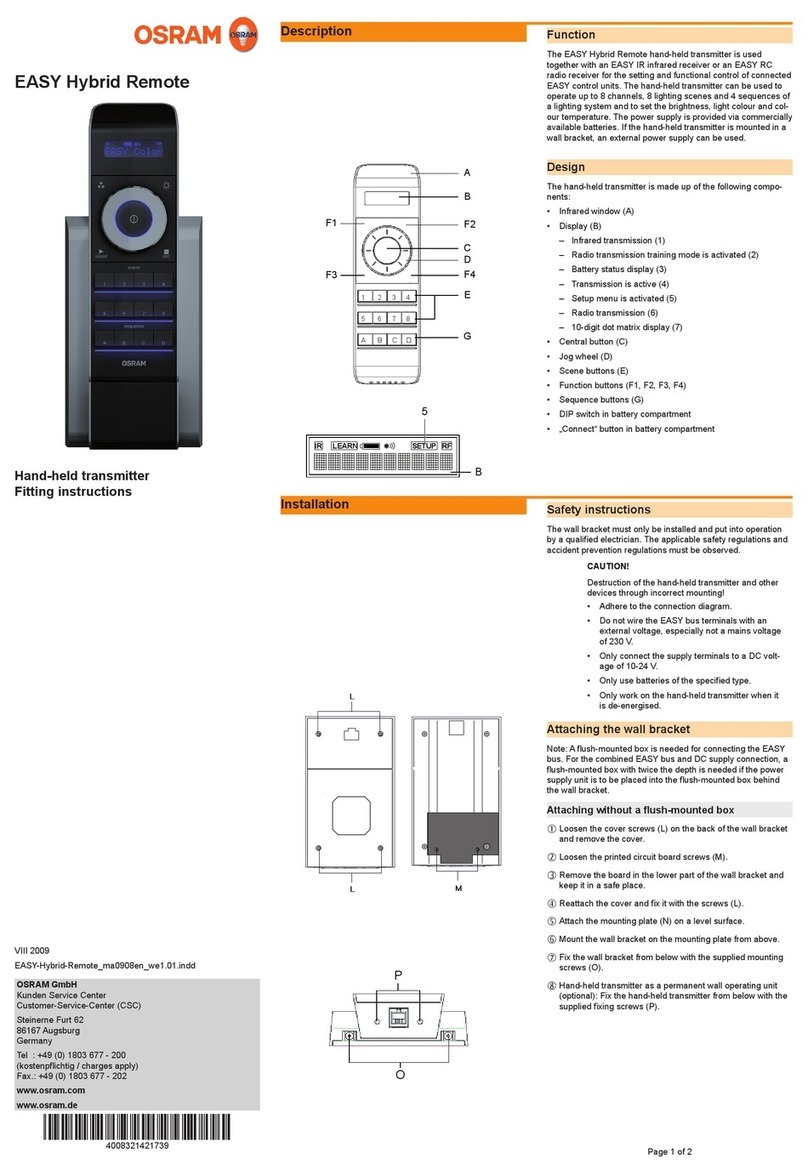
Osram
Osram EASY Hybrid Remote Fitting instructions
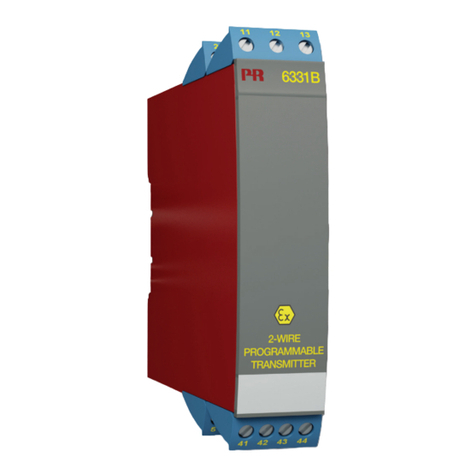
PR electronics
PR electronics 6331 Series manual
